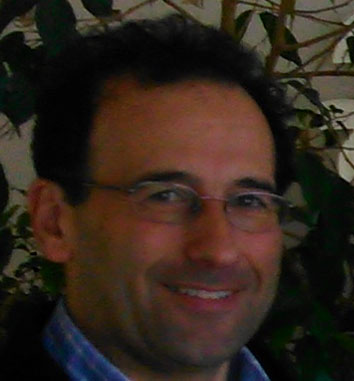Day 1 :
Keynote Forum
Joseph C. Glorioso
University of Pittsburgh, USA
Keynote: Development of retargeted ohsv vectors for systemic treatment of breast cancer
Time : 9:30 - 10:00

Biography:
Dr. Glorioso began his career as a professor in the Microbiology and Immunology and Laboratory Animal Medicine at the University of Michigan School of Medicine in 1976 and later in 1989, he moved to the University of Pittsburgh School of Medicine as the W.S McEllroy Professor and Chair of the Department of Microbiology and Molecular Genetics. He has established a 40-year history of research related to the basic biology and genetics of herpes simplex virus. His contributions to the field include defining antiviral immune responses to infection, the genetics of viral pathogenesis and latency, and mechanisms of viral infection. He has been a pioneer in the design and application of HSV gene vectors for the treatment of nervous system diseases such as peripheral neuropathies, chronic pain, and brain tumors.
Abstract:
The development of safe, oncolytic (o) HSV vectors for systemic treatment of metastatic breast cancer provides an opportunity for combining virus lytic activity with the potential to induce anti-tumor immunity. Ideally oHSV should be engineered for selective infection of tumor cells and escape from neutralizing antibodies. Complete retargeting strategies both detarget the viral attachment/entry glycoprotein gD from recognition of its cognate receptors, HVEM and nectin-1, and provide gD with a novel ligand that recognizes a highly expressed tumor-associated receptors that are poorly or not expressed on non-tumor tissue. Here we present design strategies for engineered oHSV that preferentially infect and lyse breast cancer cells by recognition of GFRα1, a receptor highly expressed on a subset of estrogen receptor-positive breast cancers. We replaced the signal peptide and HVEM binding domain of gD with pre-pro-(pp)GDNF to create a GFRα1 targeting protein, gD(Y38)-GDNF, that can still bind nectin-1. Virus expressing gD(Y38)-GDNF was propagated on cells expressing nectin-1 and purified virus was shown to enter nectin-1/HVEM-deficient J1.1-2 and B78H1 cells in a GFRα1-dependent manner. U2OS cells engineered to express GFRα1 were found to support propagation of a fully retargeted derivative virus that no longer recognizes nectin-1 but selectively infects cells through recognition of GFRα1, resulting in MOI-dependent tumor cell death in vitro. Moreover, direct intratumoral injection in nude mice showed complete tumor destruction in vivo. We have discovered, however, that retargeting can reduce the efficiency of virus entry and increase sensitivity to neutralizing (VN) antibodies, both associated with reduced retargeted gD incorporation into the virus envelope. Efficient infectivity was partially restored by selective residue changes in the downstream fusogen gB. Current studies involve engineered and selected changes in the epitope structure of retargeted gD that allow escape from VN antibodies to permit efficient systemic application of oHSV for metastatic breast cancer therapy.
Keynote Forum
John A Walsh
University of Warwick, UK
Keynote: The quest for durable plant disease resistance
Time : 10:00-10:30

Biography:
Prof Walsh’s group work on plant - virus interactions. He has published in excess of 270 research articles, 55 of which are in refereed scientific journals. He is particularly interested in natural plant resistance to viruses and has strong links with those who use the outcomes of his research and are involved in delivering them to the end users. The major thrust of this research is to identify, understand and exploit broad-spectrum, durable resistance to plant viruses. His group has had a number of major international (Spain, Germany, Holland, Sweden, Canada, China, Japan) and industry collaborations that have resulted in joint grants and joint publications. He is a past president of the International Working Group on Legume and Vegetable Viruses.
Abstract:
Recessive strain-specific resistance to a number of plant viruses in the Potyvirus genus (largest genus of plant viruses) has been found to be based on mutations in the eukaryotic translation initiation factor 4E (eIF4E) and its isoform eIF(iso)4E. Potyvirus isolates have been found to overcome most of these resistances. The VPg (viral protein genome-linked) of potyviruses is attached to the 5’ end of the +ve sense ssRNA viral genome and has been shown to bind to eIF4E and / or eIF(iso)4E host plant proteins in yeast two-hybrid assays. In this talk I will present some of our research on the Potyvirus Turnip mosaic virus (TuMV) and our quest for durable resistance to this virus. Following screens of a large number of lines of a number of brassica species, we eventually found broad-spectrum resistance to TuMV in an accession of Chinese cabbage (Brassica rapa var. pekinensis). Initial genetic analysis indicated the resistance was controlled by one recessive and one dominant gene. In the absence of whole genome sequence, triplication in the B. rapa genome and the difficulty in transforming this species, identification of the resistance genes was challenging. Transformation of candidates for the recessive allele from a TuMV-susceptible B. rapa line into a knockout line of Arabidopsis thaliana proved misleading. Eventually we did identify the genes involved in the resistance and the novel mechanism was patented. Syngenta are introgressing the resistance into commercial plant varieties using marker-assisted selection and anticipate commercial release of F1 hybrid lines in 2019. The broad-spectrum nature and the mechanism of the resistance indicate that it could be durable. In an attempt to manage the resistance we are working on further sources of broad-spectrum TuMV resistance to reduce the selection pressure for resistance breaking virus isolates.
Keynote Forum
AlfredoBerzal-Herranz
Institute of Parasitology and Biomedicine, Spain
Keynote: Deciphering the information coded by the functional rna domains of the hepatitis c virus genome
Time : 10:30-11:00

Biography:
Alfredo Berzal Herranz got his PhD from the Autónoma University of Madrid (1990). After a Postdoctoral stay at the University of Vermont (US), in 1993 he moved to the Instituto de Parasitología y Biomedicina “López-Neyra” (IPBLN; Spain) belonging to the Spanish National Research Council (CSIC) to lead his research group. Since November 2005 to March 2014 he was the Director of IPBLN-CSIC. He has published more than 80 papers, and serves as Editorial Board Member of 15 journals. He is interested in the biological activity of the RNA, mainly focusing in the structure/function of viral genomic RNA domains and characterization of antiviral RNA molecules.
Abstract:
RNA viruses have developed a coding information system that complements the protein-coding one. It consists in storing information in discrete, highly conserved structural units termed functional RNA domains. The hepatitis C virus (HCV) genome is a (+)ssRNA, which shows a high sequence variability. It contains a single open reading frame (ORF) flanked by complexly structured untranslated regions (UTRs). Besides the high structural conservation of the UTRs among different virus isolates a structural conservation analysis of the HCV RNA genome has identified the existance of highly conserved structural elements all throughout the genome. These conservations reflect that they store important information for the virus. Structural analysis of the HCV genome, using the SHAPE technology, has revealed that the two ends of the genome mutually modify each other structure. These conformational changes modulate the essential functioning of these genome regions. In particular we have shown that the highly conserved 5’BSL3.2 domain, within the region termed CRE (cis-replication element) at the 3’ end of the ORF, which plays an essential role in replication is also involved in controlling the viral translation. Further we have shown that the HCV genome dimerization is affected by RNA elements outside of the 3’X domain. We have identified essential nucleotides and structural elements within the IRES region and within the CRE region that are involved in the genome dimerization efficiency. We have demonstrated the existance of a complex network of RNA-RNA interactions where the 5BSL3.2 element seems to play a central role connecting different regions of the HCV RNA genome.
Keynote Forum
Jaroslav Turanek
Veterinary Research Institute, Czech Republic
Keynote: Noninvasive mucosal vaccination: Recombinant and mRNA vaccine formulation, delivery systems and molecular adjuvants
Time : 11:15-11:45

Biography:
Jaroslav Turánek has his expertise in nanotechnology focused on drug delivery systems based on liposomes for construction of self-assembled vaccination nanoparticles and molecular-based adjuvants. He is pioneering the technologies of nanofibre-based mucoadhesive films for noninvasive mucosal vaccination and “printed vaccine technology”. Jaroslav Turánek has completed his PhD at the age of 27 years from Masaryk University Brno. He is the head of Department of Pharmacology and Immunotherapy, Veterinary Research Institute, Brno. He has published more than 75 papers on vaccines, drug targeting, anticancer and antimicrobial drugs in reputed journals. He is teaching immunology, biotechnology and immunochemistry at Masaryk University Brno and Technical univeersity Brno. He is president of Czech Society for Gene and Cell Therapy and Principal Investigator of vast multidisciplinar project OPVVV FIT “Pharmacology, Immunotherapy, nanoToxicology” focused on applicaton of complex nanotechnology and biotechnology approach for development of new modern vaccines and targeted drug delivery systems.
Abstract:
Aim: The aim is to present the latest developments in the field of noninvasive mucosal vaccination. Selected speakers will cover topics like systems for mucosal vaccination, mucosal molecular adjuvants, mRNA constructs for vaccination, influenza virus pseudotypes, recombinant antigens and antigen formulations for mucosal delivery.
Statement of the Problem: Vaccination remains the principal way to control seasonal flue infections and is the most effective method of reducing influenza-associated morbidity and mortality. Mucosal vaccination represents non-invasive route for immunization having advantage in safety, efficacy and comfort for vaccinees, in general. At present, inactivated, live attenuated and recombinant vaccines for intradermal, intramuscular and intranasal application are licensed and in use.
Methodology & Theoretical Orientation: Advent of reverse vaccinology together with availability of recombinant technologies for economic massive production of recombinant antigens and mRNA constructs, new biocompatible nanomaterials and molecular adjuvants are prerequisites for successful development and commercialization of influenza vaccines. Especially mRNA-based influenza vaccines represent promising approach for rapid development of seasonal influenza vaccine. Recombinant antigens based on complex nanoparticles like VLP and virus pseudotypes, recombinant protein antigens derived from influenza virus and chimeric multiepitopic or fused complex protein antigens represent valuable tools for development of modern influenza vaccines. Beside intranasal vaccination, sublingual application of vaccines is of growing interest with respect to safety and induction of both systemic and generalized mucosal immune response. Development and application of new mucoadhesive films drives forward the development of mucosal vaccines. Great potential is hidden in the use of biocompatible nanomaterials, especially nanofibre- based cloth. Polymeric and lipid based nanoparticles are available as carriers for construction of vaccination nanoparticles containing mRNA or recombinant protein antigens. New materials also facilitate a development and use of new technologies for vaccine production (e.g. printing of antigen onto nanofibre-based mucoadhesive film).
